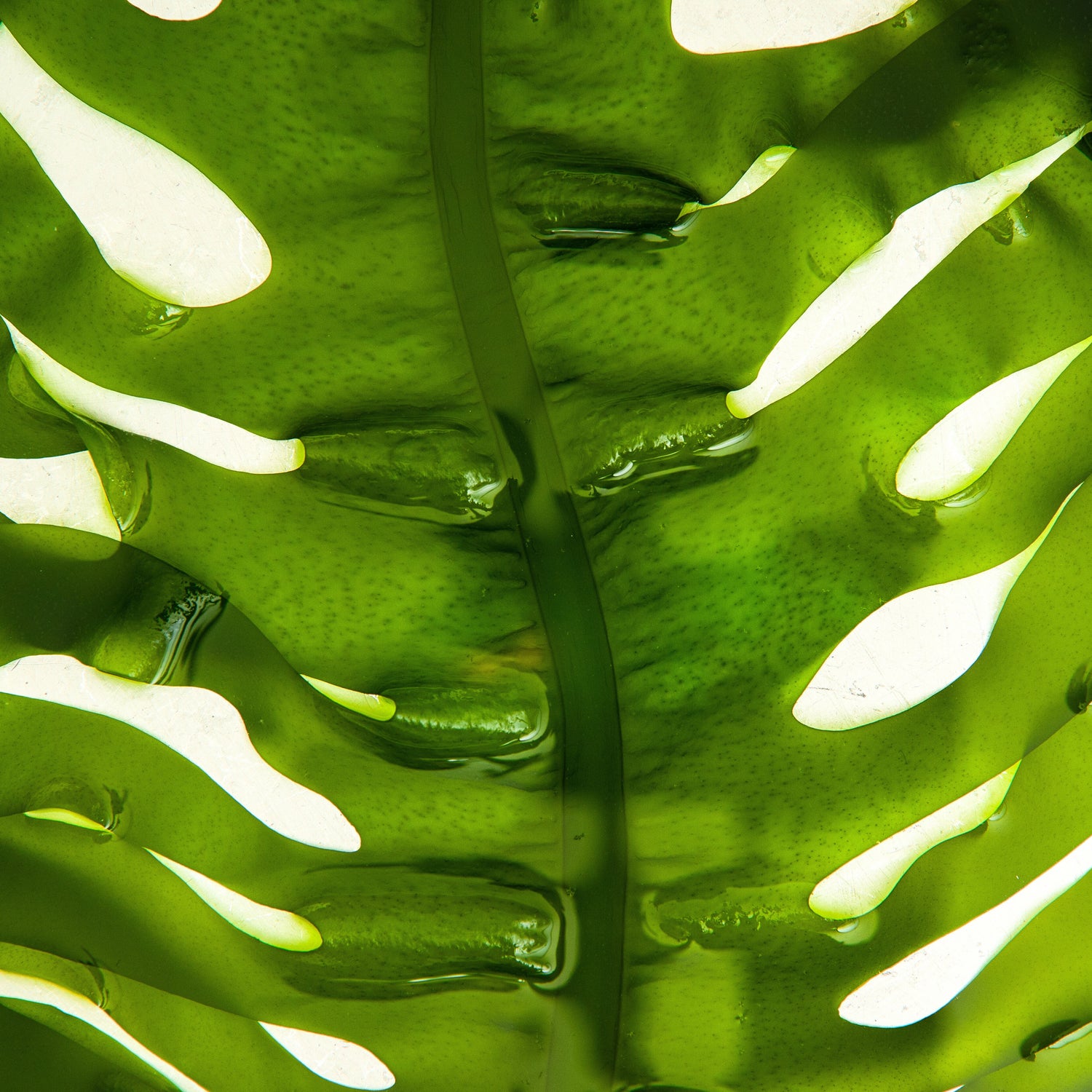
Algae at the origin of life
Algae were the first living things to appear around 3.5 billion years ago.
Their role is essential for our planet: they capture large quantities of CO2 and release oxygen.
The first consumption of seaweed can be traced back to 16,000 years ago in Chile. They have been a delicacy prized by Chinese and Japanese emperors for centuries.
There are two main families of algae: microalgae invisible to the naked eye and macroalgae which can be marine or freshwater.
Around 127,000 species have been recorded around the world, mostly microalgae. There are nearly 11,000 species of macroalgae, of which 1,500 populate the seas of Europe!
24 algae are authorized for consumption in France: 21 macroalgae and 3 microalgae.
Marine seaweeds:
The super vegetables of the sea
They have crampons as roots which allow them to attach themselves to rocks, stones or ropes in the case of their cultivation. Their leaves, called blades, allow them to absorb nutrients from the water that they need to grow. There are three families of marine macroalgae: brown, red and green.
Brown seaweeds
-
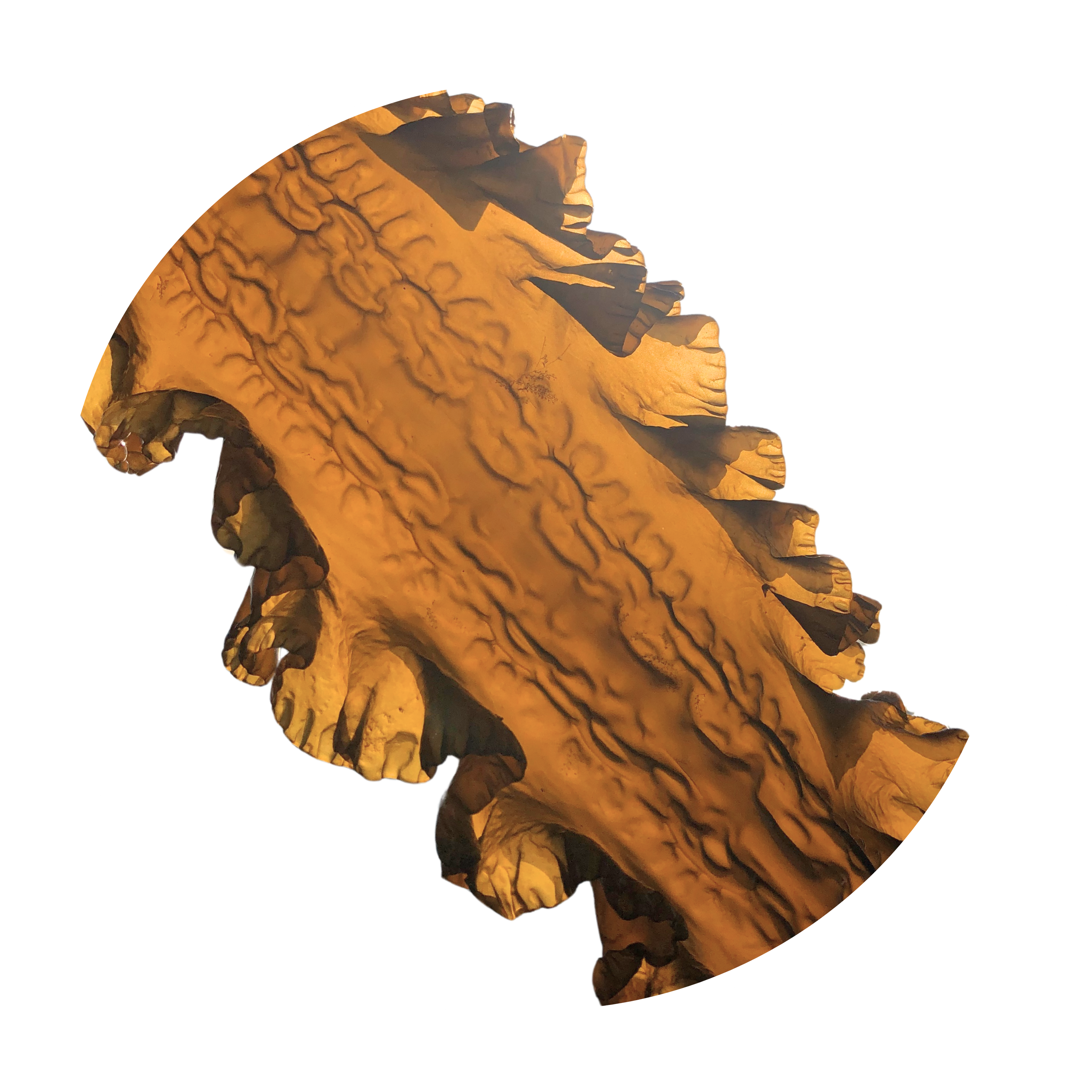
Sugar Kelp
Saccharina Latissima
Raw, royal kombu reveals a slight sweetness and a powerful iodized taste. Its cooking reveals its umami flavor.
A key element of Japanese dashi broth, it is also used for cooking fish in foil.
Its bleaching brings out the chlorophyll, giving it a green tint -
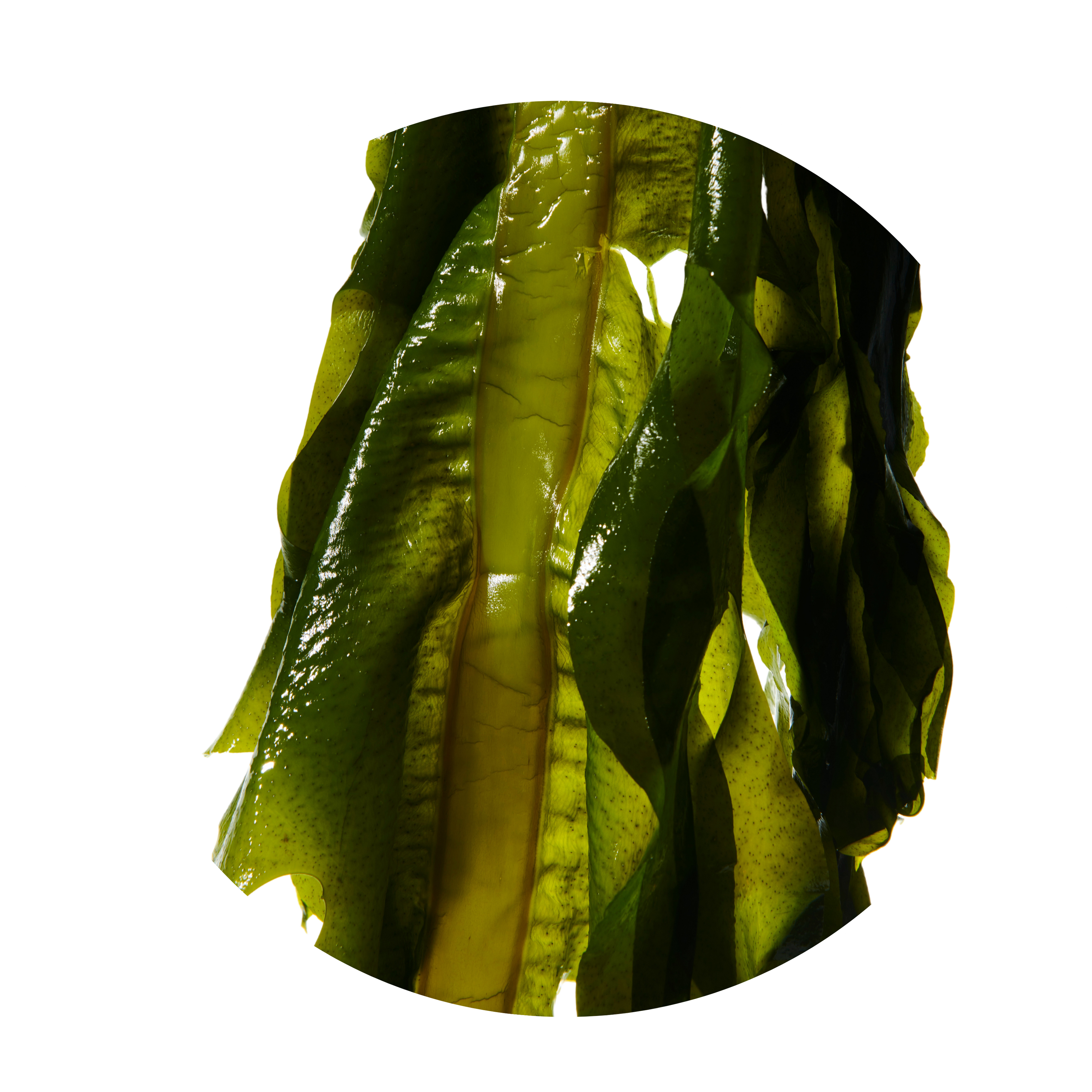
Wakame
Undaria Pinnatifida
Wakame is made up of flexible blades and crunchy ribs. It is found in Asian restaurants in the form of thin strips in salads.
Its texture is delicate and its iodized taste is not very marked.
Its bleaching brings out the chlorophyll, giving it a green tint. -
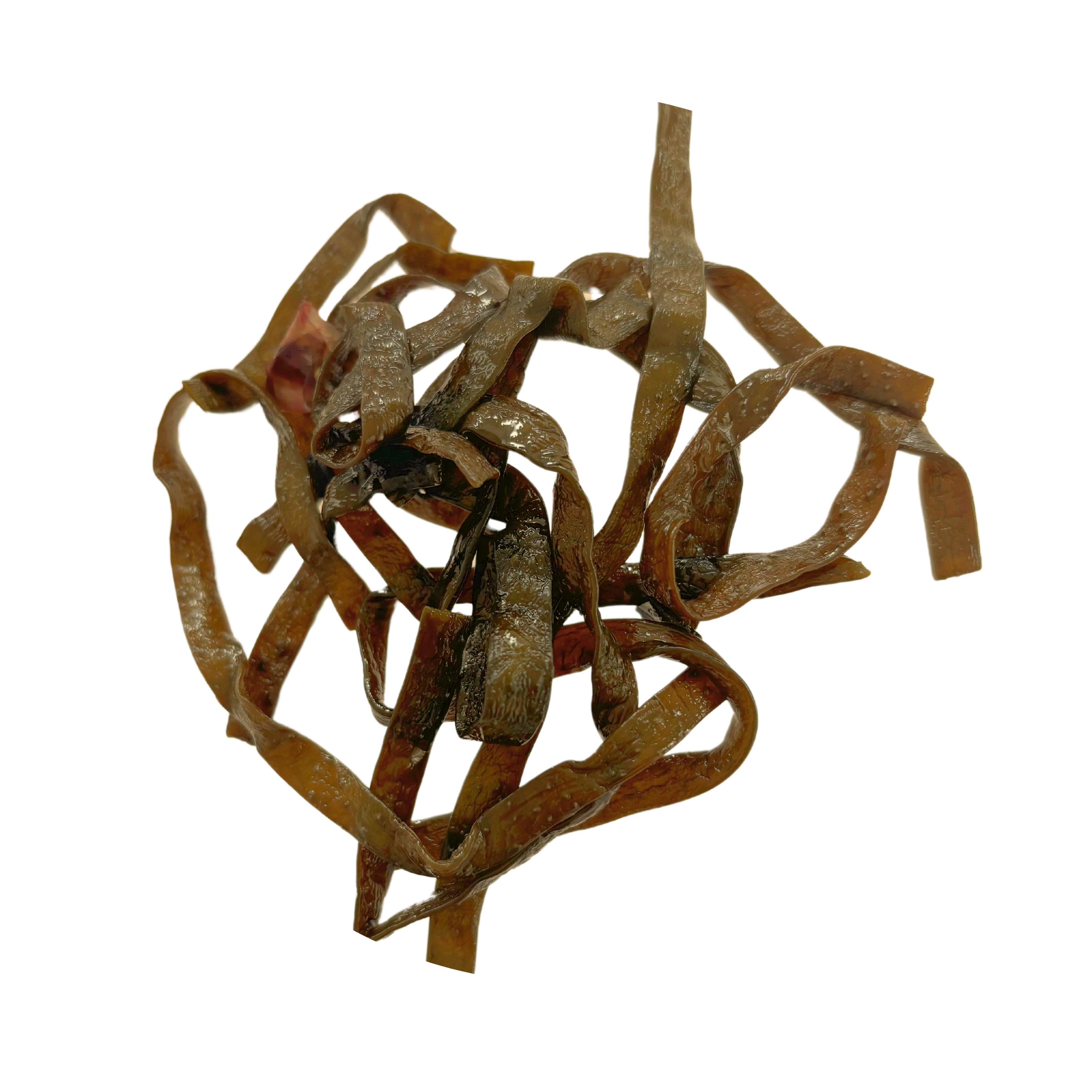
Sea Bean
Himanthalia Elongata
Also called sea spaghetti, sea beans can reach several meters long!
This brown algae becomes tender after cooking with a slightly iodized taste. They are cooked as a side vegetable. Finely sliced, sea beans add crunch to salads.
Red seaweeds
-
-
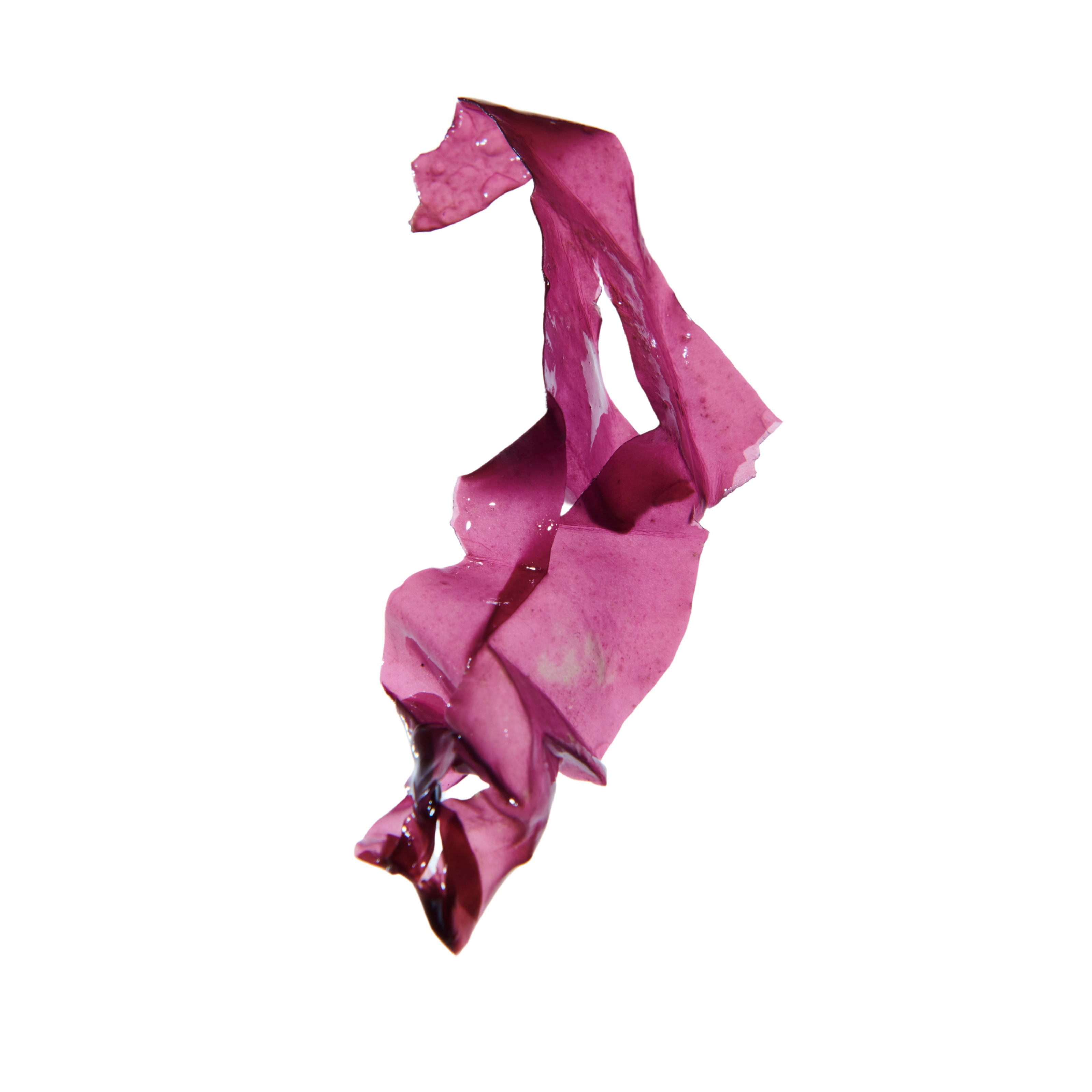
Dulse
Palmaria Palmata
Easily recognizable by its red color, Dulse is made up of membranous blades forming long thin ribbons. Its use in cooking is recognized for its nutritional virtues and its delicate nutty taste. It is eaten raw or grilled.
-
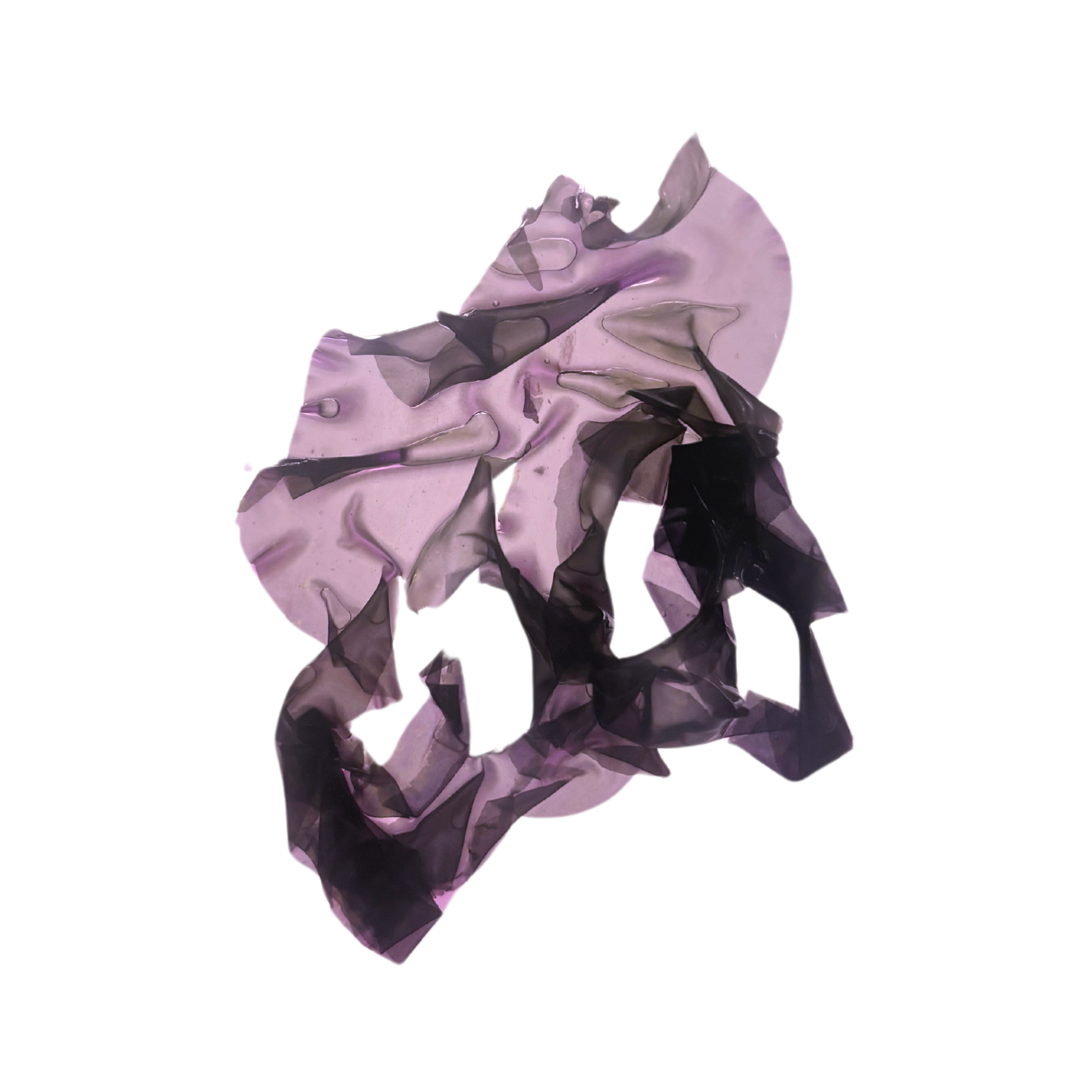
Nori
Porphyra sp.
Nori is one of the most consumed seaweeds in the world, it is mainly found in the form of sheets used in the making of makis. It is a wild seaweed harvested at low tide which reveals flavors of mushrooms and smoked tea once dried.
Green seaweeds
-
-
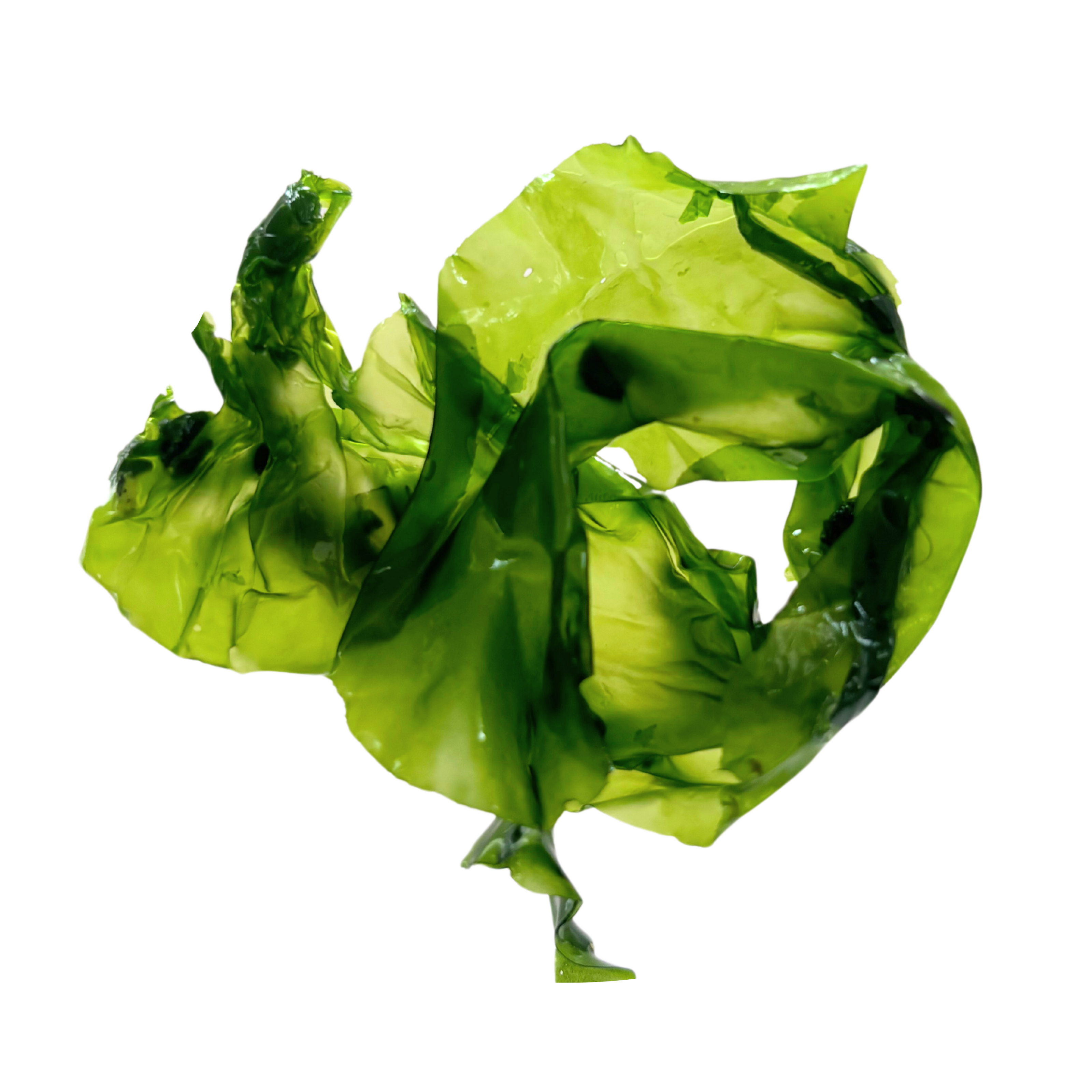
Sea Lettuce
Porphyra sp.
Similar to a green salad, sea lettuce is rich in vitamin C, calcium and magnesium. It is eaten fresh or in dried flakes. It has an elastic texture and little taste. Sea lettuce develops a slightly marbled, vegetal aroma.
Higher nutritional intake than terrestrial fruits and vegetables
-
Fibers
They facilitate digestion and increase the feeling of satiety. Their significant presence in algae contributes to the prevention of cardiovascular diseases, as well as the control of type 2 diabetes.
-
Minerals and trace elements
Seaweed is an excellent source of magnesium and calcium. They also contain copper, iron, manganese, phosphorus and zinc. Their iodine content is sought after in the diet of pregnant women.
-
Vitamins and proteins
Seaweeds are sources of vitamins A, B2, B9, C, K. Their protein content varies depending on the species, from 8% to 47% of dry matter.
-
Low in fat and low in calories
Algae are low in lipids (2% on average) and are low in calories (20 to 45 kcal/100g of fresh algae).
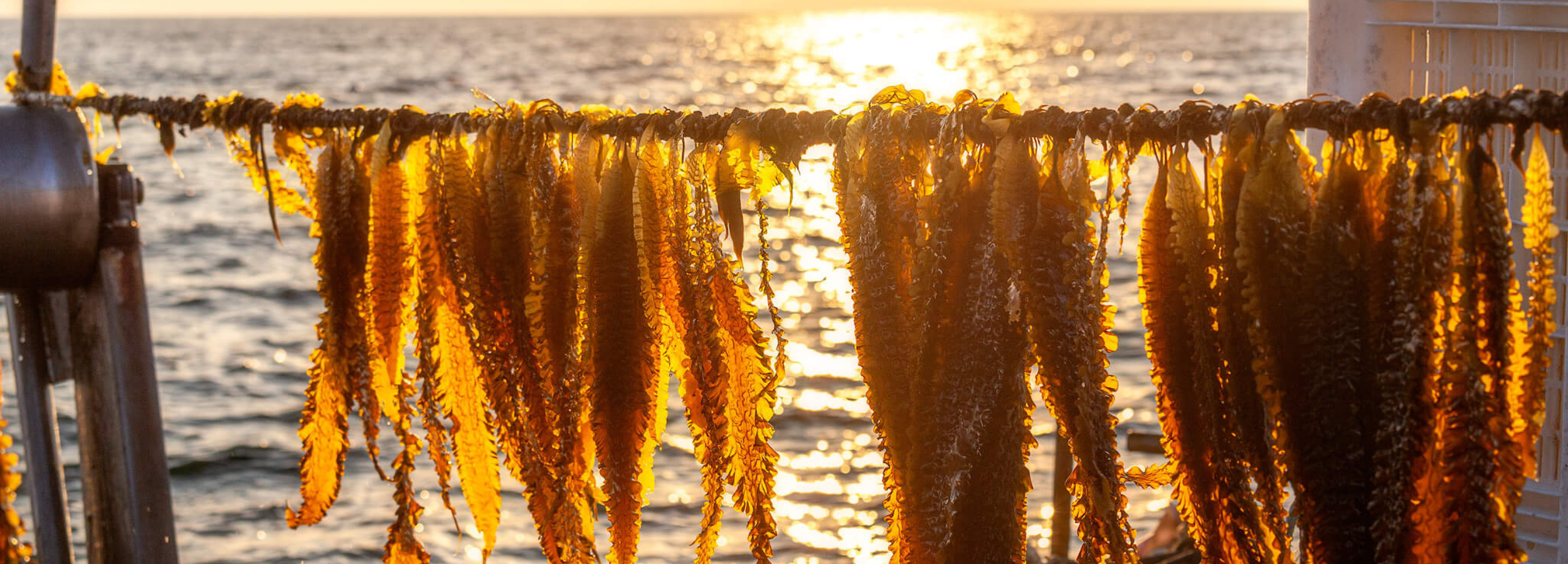
French seaweed cultivation
We still too often find algae from Asia on our plates, without any real traceability of their production method.
This is why we work exclusively with Breton seaweed farmers and work to develop this local sector.
Breton seaweed is distinguished by its exceptional quality . A true meroir , Brittany is home to unique algal biodiversity thanks to the richness of its waters, at the crossroads of ocean currents.
Cultured seaweed is a guarantee of quality, traceability and its environmental impact is more favorable to the marine ecosystem than wild harvesting.
It is a reasoned practice which follows the natural cycle of algae and does not require any input. The nutrients needed for their growth are naturally present in water.





